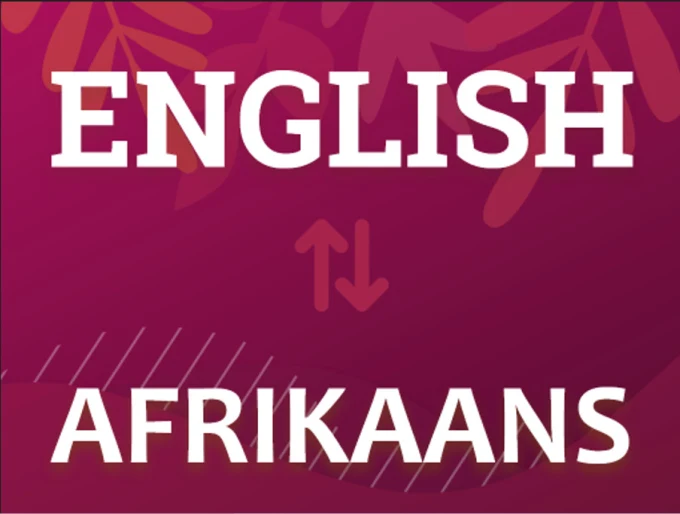Translating specialized terms between languages is often more complex than just replacing one word with another. The task requires not only linguistic knowledge but also an understanding of cultural contexts, regional variations, and the specific nuances within different fields. One such term, “grundoel,” though not widely recognized in common discourse, holds significant value across certain industries and areas of expertise. This article will dive into the meaning of “grundoel,” how to effectively translate it into Afrikaans, the tools required for an accurate translation, and how cultural considerations shape the final output. By the end, you will have a detailed understanding of the translation process for this term and other similar specialized phrases.
Understanding the Term “Grundoel”
Before we attempt to translate “grundoel,” it is crucial to comprehend its meaning. The term itself is not a standard dictionary word but might appear in specific professional, industrial, or technical contexts. Based on various uses, “grundoel” can refer to an underlying goal or objective, often tied to strategic frameworks, business operations, or even specialized fields such as engineering or project management.
In certain instances, “grundoel” might be used to describe the essential or foundational objective that guides the direction of a particular project, organization, or initiative. For instance, in a business context, a “grundoel” could be the primary mission or goal that shapes the actions and decisions of a team or company. Alternatively, in technical sectors, it could describe a fundamental step in a process or a primary objective that anchors the operation of machinery, systems, or processes.
Grundoel in Afrikaans: The Challenge of Translation
Translating “grundoel” into Afrikaans can present a challenge, as the term may not have an exact counterpart in the language. In such cases, the translation must be done carefully to capture not only the linguistic meaning but also the underlying intent and context. Afrikaans, like many languages, has its own set of idiomatic expressions and terminologies, which means that direct translation may not always be the best approach.
Given the variety of contexts in which “grundoel” could be used, the translation must be tailored to fit the specific domain in which it is applied. It is important to remember that the correct translation depends largely on the field in question. Whether it is a business goal, a strategic objective, or a technical milestone, the most accurate translation into Afrikaans will depend on understanding the domain and its associated terminology.
Tools for Translating “Grundoel” into Afrikaans
To ensure an accurate and effective translation, translators must employ a set of specialized tools. These tools help bridge the gap between languages while maintaining the meaning and nuances of the original term. The tools needed for translating a term like “grundoel” into Afrikaans include:
1. Comprehensive Dictionaries and Glossaries
A fundamental resource for any translator is a comprehensive dictionary or glossary that covers both general language use and specific industry terminology. For terms like “grundoel,” which may not have an obvious or standard equivalent in Afrikaans, specialized dictionaries and glossaries are indispensable. These resources can provide guidance on how similar terms are used in Afrikaans and help identify potential equivalents.
Additionally, modern digital platforms and online databases offer dynamic and constantly updated terminology, making them excellent resources for translators working with specialized words. Industry-specific glossaries, particularly in fields like engineering, business, or project management, can offer a detailed understanding of how “grundoel” is applied within its specific context.
2. Native Speaker Insight
One of the most effective tools for translating a term like “grundoel” is consulting native Afrikaans speakers, particularly those familiar with the field in question. Their insight helps ensure that the translation sounds natural and aligns with the cultural norms of Afrikaans speakers. Native speakers can also provide valuable feedback on whether a proposed translation truly reflects the intended meaning, especially when dealing with specialized terminology.
In the case of “grundoel,” a native speaker with knowledge of the specific domain will be able to determine whether the term has a direct equivalent in Afrikaans or if a more nuanced translation is required. This is especially important when working in fields where terminology may be fluid or subject to change over time.
3. Cultural Consultation
Translation is not solely a linguistic process but also a cultural one. The meaning of a word can shift dramatically depending on cultural context. Therefore, it is essential to understand the cultural backdrop of the term “grundoel” in both the source language and the target language. Consulting cultural experts or professionals in the field can help identify potential pitfalls in translation and ensure that the word is used appropriately.
For example, certain expressions or idioms used in the source language may have no direct counterpart in Afrikaans. In these instances, a translator must find an equivalent that conveys the same meaning without offending or confusing the target audience. Cultural consultants can guide this process, highlighting areas where the translation might need adjustment to align with the social, ethical, or political values of Afrikaans speakers.
4. Translation Memory Software
Translation memory (TM) software is a technological tool that helps translators maintain consistency and accuracy across a project. This software stores previously translated terms, phrases, and sentences, making it easier for translators to reuse consistent translations throughout a document or series of documents.
For a term like “grundoel,” which may appear multiple times in different contexts, TM software ensures that the translation remains consistent and coherent. This tool is particularly useful for large translation projects, where maintaining uniformity across multiple documents or sections is essential.
5. Feedback Loops
The process of translating specialized terms like “grundoel” should not end with the first draft. Feedback loops, which involve seeking input from clients, colleagues, or experts in the field, play a crucial role in refining the translation. These loops allow the translator to make adjustments based on feedback and ensure that the translation is precise and accurate.
By incorporating feedback from native speakers, cultural consultants, and industry experts, translators can identify any areas where the meaning may not have been fully conveyed or where the term could be interpreted differently in the target language.
6. Professional Development and Continuous Learning
To stay current with language trends and industry-specific terminology, translators must continually develop their skills. Attending workshops, conferences, and training sessions related to both language and industry-specific content is an important part of professional development.
In the case of “grundoel,” keeping up with the latest terminology used in the relevant fields (such as business, engineering, or project management) is crucial. This ongoing learning helps translators stay up-to-date and ready to tackle the challenges posed by specialized terms.
Real Practices for Effective Translation of “Grundoel” into Afrikaans
To apply these tools effectively in practice, a translator must follow several key steps:
- Contextual Analysis: Understanding how “grundoel” is used in the source language is essential. This involves examining the context in which the term appears, including the surrounding language and the specific field or domain.
- Identifying Possible Equivalents: After understanding the context, the next step is to find an appropriate Afrikaans equivalent. This might involve using a combination of translation tools and consulting native speakers to ensure that the meaning is retained.
- Testing and Adjustment: Once a translation is selected, it must be tested for clarity and accuracy. Feedback from native speakers and experts can help refine the translation and ensure that it resonates with the target audience.
- Finalizing the Translation: After making necessary adjustments, the final translation should be reviewed to ensure consistency and coherence. This includes checking for any cultural nuances that may have been missed during the translation process.
Challenges in Translating “Grundoel”: Cultural Sensitivity
One of the biggest challenges in translating specialized terms like “grundoel” is understanding the cultural implications. In some cases, a term may hold significance in one culture that does not translate easily to another. For instance, the concept of an underlying goal or strategy in “grundoel” may be viewed differently in Afrikaans-speaking cultures depending on the specific field or industry.
Therefore, cultural sensitivity is crucial. The translator must ensure that the translated term carries the same weight and meaning, avoiding any cultural misinterpretations or offense. In cases where the term touches on ethical or political issues, the translator must tread carefully to ensure the translation is appropriate and respectful.
Conclusion
Translating specialized terms like “grundoel” into Afrikaans requires more than just linguistic expertise; it requires cultural awareness, industry knowledge, and the use of a variety of tools. By engaging in thorough contextual analysis, utilizing specialized dictionaries, collaborating with native speakers, and implementing continuous feedback, translators can ensure that the translation of “grundoel” is both accurate and culturally sensitive. As language evolves and industries progress, it is essential to stay informed and adaptable, ensuring that translations remain relevant and effective. Ultimately, this process fosters better communication and understanding across language barriers, enriching both linguistic and cultural exchange.

